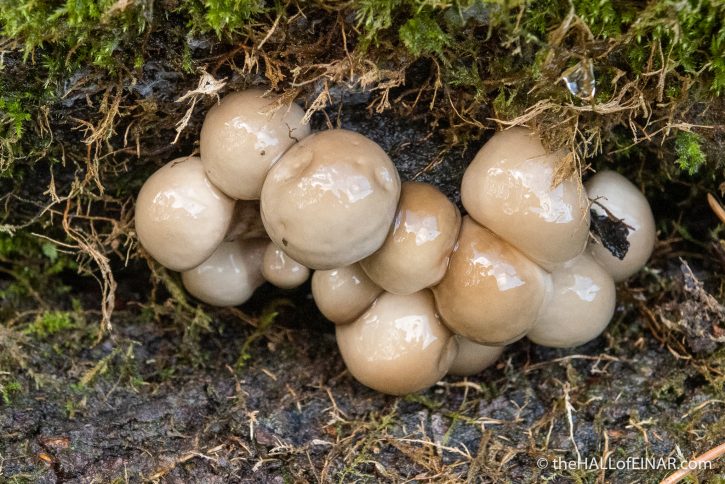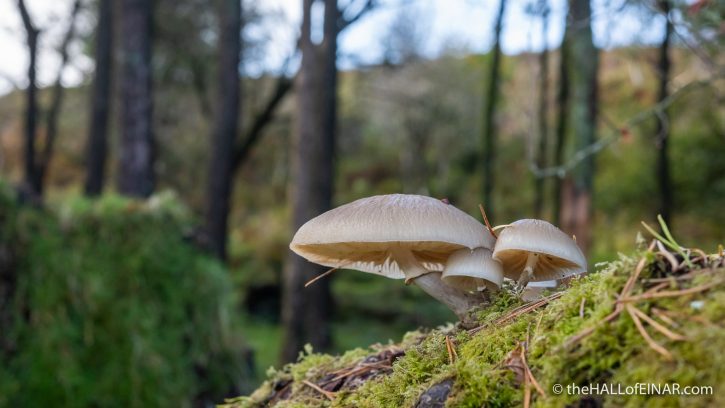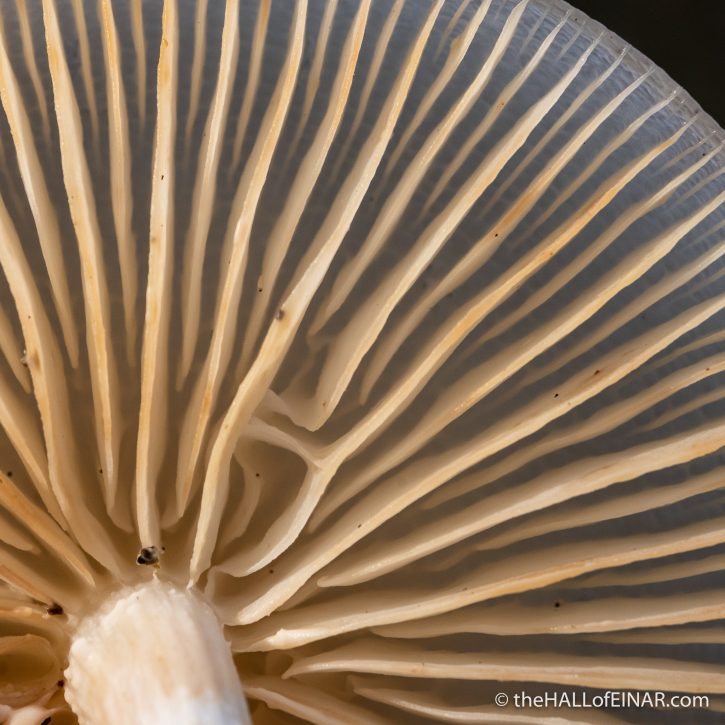Porcelain fungus
I stop the car in a small valley on Dartmoor. There’s an enormous fallen Beech tree and it’s covered with fungi. Glistening bundles of slimy caps emerge from the hard surface in profusion.

They expand and crowd each other out in their eagerness to spread their gills and catch the wind.

They are Porcelain Fungus, Oudemansiella mucida.

The cap is translucent and the radiating gills make fascinating patterns.
There must be some very interesting maths involved in the evolution of the gills of mushrooms. Too far apart and you’ve wasted all that energy building a cap to keep them dry if you fill it with empty space. Too close and spores will fall off one gill and just get stuck on the gill next door and never make it into the air to infect another Beech tree.
Look closely and you can see there are long gills which reach all the way from the stem to the edge of the cap. Then there are large intermediate gills which don’t reach the stem but cover three-quarters of the distance. Then there is another set of gills which makes it less than half way. Finally, there’s the smallest hint of a final set which just fill the remaining gaps.
There must be a best width of the gills to maximise reproductive spore production without wasting energy producing structural components.
And all of that has been produced naturally over millions of years as the ones which were most economic became better represented in future fungal growth.
Natural selection; it’s magic.

I’m glad I evolved to appreciate beauty.

